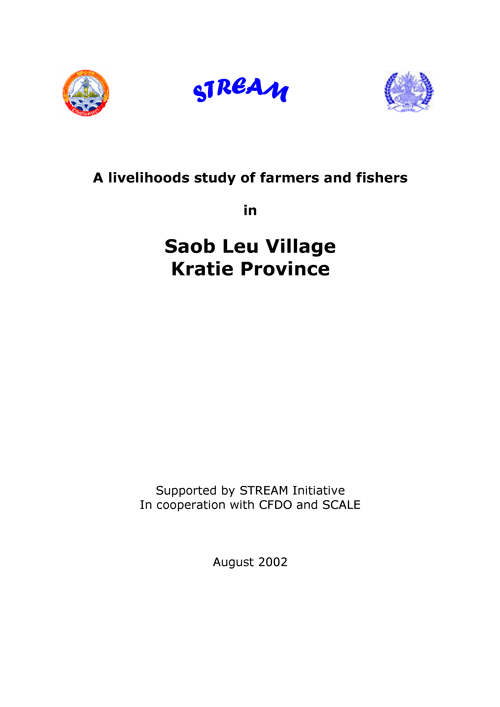A livelihoods study of farmers and fishers in Saob Leu Village, Kratie Province, Cambodia
1 August 2002 | 2202 Downloads | .pdf | 605.39 KB | Gender, Livelihoods, gender and social issues, Cambodia
This is the report of a livelihoods study team working together with villagers from Saob Leu Village in Kratie Province, Cambodia. The study is based on information provided by the villagers, who shared their knowledge and spoke about the real problems they face with their livelihoods.
This study was conducted from 10-15 July 2002. The team worked with 1530 villagers who volunteered to participate and represented the 177 households in the village.
In the village, there were differences in material ownership, means of production and standards of living. The villagers divided themselves into five wealth ranking groups: rich, medium, under medium, poor and very poor. The main resources in the village were then identified under five categories: human, natural, financial, infrastructure and social.
The villagers rely mainly on farming, with dry season rice being the most important crop. Most villagers are involved in small-scale fishing, with some having other skills. Before 2000, most villagers could make charcoal, and find timber and firewood to sell, but now these activities are illegal.
The main problems were identified as loss of land due to erosion, degradation of the forest and flooded forest, and the invasive spread of a new tree variety. Population growth has also put added demands on limited resources. Institutionally, the government, business people and civil society share a range of roles and have different impacts on the villagers.
The issues and problems discussed during the study in Saob Leu Village enabled the team to raise some considerations for the current situation and for the future. It was felt that the villagers worked well together with respected leaders, but they had some problems in dealing with the population growth. They were unsure how to expand their agricultural activities without this having a negative impact on the village’s aquatic resources. The use by some villagers of large-scale fishing tackle and poaching made it harder for poor people to catch enough fish. A new tree species was also causing difficulties as it grows fast and spreads rapidly in farming areas. A government directive on forestry use made those depending on the forest for income unemployed. This predominantly affected the poorest families in the village. Credit interests rates were felt to be too high and the infrastructure made access to and from the village difficult.
A number of recommendations were made for advice in family planning, establishment of a community fishing committee, a plan to build a bridge, a low interest credit scheme and increased knowledge of animal husbandry.
When the villagers had discussed their problems, with the study team's help they identified the most important problem and developed an action plan to address it. The villagers plan to build a bridge across Saob channel.
This publication is also available in Khmer.
Creative Commons Attribution.

